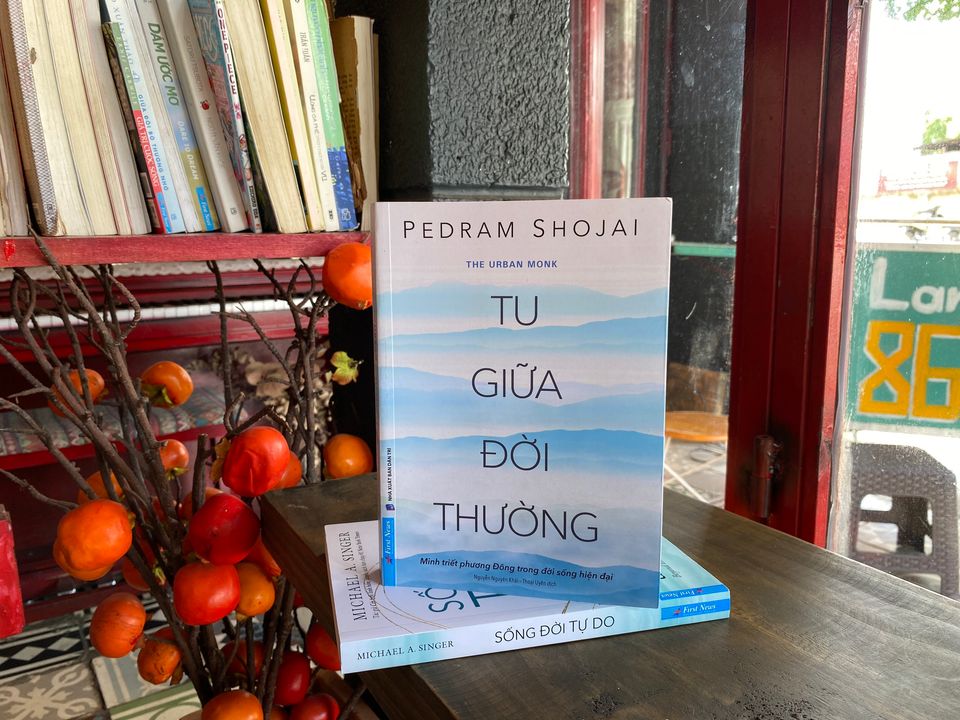Văn minh Minos


Bài này nằm trong loạt bài về |
|---|
| Lịch sử Hy Lạp |
 |
Minos (Tiếng Hy Lạp: Μινωίτες) là một nền văn minh thời đại đồ đồng ở Crete đã thống trị vùng biển Aegea, phát triển phồn thịnh vào khoảng từ năm 2700 tới năm 1450 trước Công Nguyên. Họ nổi tiếng là những người tiên phong và phát triển rực rỡ trong lĩnh vực hàng hải bởi vị trí thuận lợi, nằm ở điểm giao nhau của các tuyến đường thương mại.
Sau đó nền văn hóa của họ bị thay thế bởi nền văn hóa Mycenae. Theo truyền thuyết, vua Minos là người sáng lập nước Minos.
Địa lý
[sửa | sửa mã nguồn]Đảo Crete
[sửa | sửa mã nguồn]Trung tâm của nền văn minh Minoan, đảo Crete là một hòn đảo với núi đá tự nhiên, cùng những vị trí thuận lợi cho việc xây dựng bến cảng. Hòn đảo gần đường đứt gãy giữa các mảng lục địa, nên hòn đảo xảy ra động đất, cùng với quá trình kiến tạo địa chất, dâng lên của nước biển Homer ghi lại, thời kỳ đỉnh cao của Minoan, Crete đã có tới 90 thành phố chia thành 8 đơn vị chính trị, bao gồm các cung điện, hải cảng được xây dựng từ Knossos ở phía Bắc tới Phaistos ở phía Nam, từ Kato Zakros và Malia ở phía Đông tới Chania ở phía Tây. Một số khu vực khác đã tìm thấy những cung điện nhỏ hơn.
Các địa điểm khảo cổ nổi tiếng về nền văn minh Minoan trên đảo bao gồm:
- Cung điện
- Knossos, là cung điện lớn nhất của Minoan, được khai quật bởi Evans vào ngày 16 tháng 3 năm 1900.
- Phaistos, là cung điện lớn thứ hai được xây dựng trên đảo,ngay sau khi phát hiện ra Knossos
- Malia, được khai quật bởi những nhà khảo cổ Pháp.
- Kato Zakros, còn gọi là Zakro một cung điện được khai quật bởi các nhà khảo cổ học Hy Lạp ở phía đông của hòn đảo.
- Galatas
- Agia Triada - gần trung tâm hành chính Phaistos
- Gournia
- Pyrgos - Phía nam của hòn đảo
- Vasiliki
- Fournu Korfi
- Pseira, (một thị trấn đảo)
- Núi Juktas
- Arkalochori
- Karfi
- Akrotiri
- Zominthos - một thành phố ở chân núi phía bắc của núi Ida
Khu vực khác
[sửa | sửa mã nguồn]Người Minoan là những thương nhân vượt ra ngoài Crete tới tận Ai Cập cổ đại, Síp (mỏ đồng lớn nhất của Minoan), vùng bờ biển Levant Canaan, Anatolia. Minoan có ảnh hưởng tới rất nhiều các khu vực và nền văn minh khác, nhất là những người Canaan bằng kỹ thuật làm gốm, hợp kim đồng cùng vai trò trong ngành hàng hải. Một số khu định cư của người Minoan nằm ngoài Crete bao gồm quần đảo Cyclades, đảo Karpathos, Saros và Kasos hay Ialysos trên đảo Rhodes.
Niên đại
[sửa | sửa mã nguồn]Theo phân chia về hệ thống thời gian của nhà khảo cổ học Evans dựa trên phong cách làm đồ gốm của người Minoan đã phân chia thời kỳ Minoan thành ba thời kỳ chính: Minoan sớm (EM), Minoan giữa (MM), và Minoan muộn (LM). Những thời kỳ này lại được chia nhỏ hơn nữa, ví dụ như Minoan sớm I, II, III (EMI, EMII, EMIII). Một hệ thống thời gian khác được đề xuất bời nhà khảo cổ học người Hy Lạp là Nicolas Platon, được dựa trên sự phát triển của các cung điện tại Knossos, Phaistos, Malia, và Kato Zakros, chia niên đại Minoan vào Prepalatial, thời gian Protopalatial, Neopalatial, và Post-nguy nga. Mối quan hệ giữa các hệ thống này được đưa ra trong bảng kèm theo, với ngày lịch gần đúng được rút ra từ Warren và Hankey (1989). Sự kiện núi lửa Thera phun trào vào giai đoạn LM IA. Thời gian chính xác của đợt phun trào núi lửa vẫn còn gây nhiều tranh cãi nhưng những nghiên cứu về chỉ ra trong khoảng thời gian cuối thế kỷ 17 TCN, tuy nhiên, các nhà khảo cổ học cho rằng nó xảy ra vào khoảng 1525-1500 TCN. Đây được coi là sự kiện thảm họa tự nhiên, dẫn đến sự sụp đổ nhanh chóng của nền văn minh Minoan.
Tham khảo
[sửa | sửa mã nguồn]- Benton, Janetta Rebold and DiYanni, Robert. Arts and Culture: An Introduction to the Humanities. Volume 1. Prentice Hall. New Jersey, 1998.
- Bourbon, F. Lost Civilizations. Barnes and Noble, Inc. New York, 1998.
- Branigan, Keith, 1970. The Foundations of Palatial Crete.
- Branigan, Keith, 1999. "The Nature of Warfare in the Southern Aegean During the Third Millennium B.C.," các trang 87–94 In Laffineur, Robert, ed., Polemos: Le Contexte Guerrier en Égée à L'Âge du Bronze. Actes de la 7e Rencontre égéenne internationale Université de Liège, 1998. Université de Liège, Histoire de l'art d'archéologie de la Grece antique.
- Burkert, Walter, 1985. Greek Religion. J. Raffan, trans. Cambridge: Harvard University Press. ISBN 0-674-36281-0
- Cadogan, Gerald, 1992, " Ancient and Modern Crete," in Myers et al., 1992, Aerial Atlas of Ancient Crete.
- Castleden, Rodney (1993). Minoans: Life in Bronze Age Crete. Routledge. ISBN 0-415-04070-1. 041508833X.
- Callender, Gae (1999) The Minoans and the Mycenaeans: Aegean Society in the Bronze Age Oxford university press, Victoria 3205, Australia
- Dickinson, Oliver (1994; 2005 re-print) The Aegean Bronze Age, Cambridge World Archaeology, Cambridge University Press.
- Driessen, Jan, 1999."The Archaeology of Aegean Warfare," các trang 11–20 in Laffineur, Robert, ed., Polemos: Le Contexte Guerrier en Égée à L'Âge du Bronze. Actes de la 7e Rencontre égéenne internationale Université de Liège, 1998. Université de Liège, Histoire de l'art d'archéologie de la Grece antique.
- Sir Arthur Evans, 1921-35. The Palace of Minos: A Comparative Account of the Successive Stages of the Early Cretan Civilization as Illustrated by the Discoveries at Knossos, 4 vols. in 6 (reissued 1964).
- Floyd, Cheryl, 1999. "Observations on a Minoan Dagger from Chrysokamino," các trang 433–442 In Laffineur, Robert, ed., Polemos: Le Contexte Guerrier en Égée à L'Âge du Bronze. Actes de la 7e Rencontre égéenne internationale Université de Liège, 1998. Université de Liège, Histoire de l'art d'archéologie de la Grece antique.
- Gates, Charles, 1999. "Why Are There No Scenes of Warfare in Minoan Art?" pp 277–284 In Laffineur, Robert, ed., Polemos: Le Contexte Guerrier en Égée à L'Âge du Bronze. Actes de la 7e Rencontre égéenne internationale Université de Liège, 1998. Université de Liège, Histoire de l'art d'archéologie de la Grece antique.
- Gere, Cathy. Knossos and the Prophets of Modernism, University of Chicago Press 2009.
- Hägg, R. and N. Marinatos, eds. The Minoan Thalassocracy: Myth and Reality (Stockholm) 1994. A summary of revived points-of-view of a Minoan thalassocracy, especially in LMI..
- Haralampos V. Harissis, Anastasios V. Harissis. Apiculture in the Prehistoric Aegean.Minoan and Mycenaean Symbols Revisited British Archaeological Reports S1958, 2009 ISBN 978-1-4073-0454-0.
- Gesell, G.C. (1983). “The Place of the Goddess in Minoan Society”. Trong O. Krzyszkowska and L. Nixon (biên tập). Minoan Society. Bristol.
- Goodison, Lucy, and Christine Morris, 1998, "Beyond the Great Mother: The Sacred World of the Minoans," in Goodison, Lucy, and Christine Morris, eds., Ancient Goddesses: The Myths and the Evidence, London: British Museum Press, các trang 113–132.
- Hawkes, Jacquetta, 1968. Dawn of the Gods. New York: Random House. ISBN 0-7011-1332-4
- Higgins, Reynold, 1981. Minoan and Mycenaean Art, (revised edition).
- Hogan, C. Michael, 2007. Knossos fieldnotes, Modern Antiquarian
- Hood, Sinclair, 1971, The Minoans: Crete in the Bronze Age. London.
- Hood, Sinclair, 1971. The Minoans: The Story of Bronze Age Crete
- Hughes, Dennis, 1991. Human Sacrifice in Ancient Greece. Routledge: London.
- Hutchinson, Richard W., 1962. Prehistoric Crete (reprinted 1968)
- Kristiansen, Kristiansen & Larsson, Thomas B. (2005) The Rise of Bronze Age Society: Travels, Transmissions and Transformations Cambridge University Press
- Krzszkowska, Olga, 1999. "So Where's the Loot? The Spoils of War and the Archaeological Record," các trang 489–498 In Laffineur, Robert, ed., Polemos: Le Contexte Guerrier en Égée à L'Âge du Bronze. Actes de la 7e Rencontre égéenne internationale Université de Liège, 1998. Université de Liège, Histoire de l'art d'archéologie de la Grece antique.
- Lapatin, Kenneth, 2002. Mysteries of the Snake Goddess: Art, Desire, and the Forging of History. Boston: Houghton Mifflin. ISBN 0-306-81328-9
- Manning, S.W., 1995. "An approximate Minoan Bronze Age chronology" in A.B. Knapp, ed., The absolute chronology of the Aegean Early Bronze Age: Archaeology, radiocarbon and history (Appendix 8), in series Monographs in Mediterranean Archaeology, Vol. 1 (Sheffield: Sheffield Academic Press) A standard current Minoan chronology.
- Marinatos, Nanno, 1993. Minoan Religion: Ritual, Image, and Symbol. Columbia, SC: University of South Carolina Press.
- Marinatos, Spyridon, 1960. Crete and Mycenae (originally published in Greek, 1959), photographs by Max Hirmer.
- Marinatos, Spyridon, 1972. "Life and Art in Prehistoric Thera," in Proceedings of the British Academy, vol 57.
- Mellersh, H.E.L., 1967. Minoan Crete. New York, G.P. Putnam's Sons.
- Nixon, L., 1983. "Changing Views of Minoan Society," in L. Nixon, ed. Minoan society: Proceedings of the Cambridge Colloquium, 1981.
- Pendlebury, J.D.S., 2003. Handbook to the Palace of Minos at Knossos with Its Dependencies, republication of earlier work with contributor Arthur Evans, Kessinger Publishing, 112 pages ISBN 0-7661-3916-6
- Quigley, Carroll, 1961. The Evolution of Civilizations: An Introduction to Historical Analysis, Indianapolis: Liberty Press.
- Papadopoulos, John K., "Inventing the Minoans: Archaeology, Modernity and the Quest for European Identity", Journal of Mediterranean Archaeology 18:1:87-149 (June 2005)
- Pichler, H & Friedrich, W, L (1980) Mechanism of the Minoan Eruption of Santorini, in Thera and the Aegean World, vol.2, ed. C. Doumas, London
- Preziosi, Donald & Hitchcock, Louise A. (1999) Aegean Art and Architecture, Oxford History of Art series, Oxford University Press.
- Rehak, Paul, 1999. "The Mycenaean 'Warrior Goddess' Revisited," các trang 227–240, in Laffineur, Robert, ed. Polemos: Le Contexte Guerrier en Égée à L'Âge du Bronze. Actes de la 7e Rencontre égéenne internationale Université de Liège, 1998. Université de Liège, Histoire de l'art d'archéologie de la Grece antique.
- Schoep, Ilse, 2004. "Assessing the role of architecture in conspicuous consumption in the Middle Minoan I-II Periods." Oxford Journal of Archaeology vol 23/3, các trang 243–269.
- Sakellarakis, Y. and E. Sapouna-Sakellarakis (1981). “Drama of Death in a Minoan Temple”. National Geographic. 159 (2): 205–222.
- Soles, Jeffrey S., 1992, The Prepalatial Cemeteries at Mochlos and Gournia and the House Tombs of Bronze Age Crete: And the House Tombs of Bronze Age Crete, Published by ASCSA, 1992.
- Warren P., Hankey V., 1989. Aegean Bronze Age Chronology (Bristol).
- Watrous, L. Vance., 1991 The Origin and Iconography of the Late Minoan Painted Larnax in Hesperia, Vol. 60, No. 3 (Jul - Sep., 1991), các trang 285–307
- Willetts, R. F., 1976 (1995 edition). The Civilization of Ancient Crete. New York: Barnes & Noble Books. ISBN 1-84212-746-2
- Yule, Paul. Early Cretan Seals: A Study of Chronology. Marburger Studien zur Vor- und Frühgeschichte 4, Mainz 1980 ISBN 3-8053-0490-0
Tham khảo
[sửa | sửa mã nguồn]Liên kết ngoài
[sửa | sửa mã nguồn]- “The Thera Foundation”. therafoundation.org. 2011. Bản gốc lưu trữ ngày 26 tháng 3 năm 2012. Truy cập ngày 11 tháng 12 năm 2012.
- Swindale, Ian (1998–2012). “Minoan Crete”. digiserve.com. Bản gốc lưu trữ ngày 16 tháng 11 năm 2012. Truy cập ngày 11 tháng 12 năm 2012.Quản lý CS1: định dạng ngày tháng (liên kết)
- “Minoan Civilization”. Fotopedia Encyclopedia (BETA). fotopedia.com. Bản gốc lưu trữ ngày 10 tháng 8 năm 2010. Truy cập ngày 22 tháng 3 năm 2012.
- Chaniotis, Angelos (2011). “Ancient Crete”. Oxford Bibliographies. oxfordbibliographiesonline.com.[liên kết hỏng]
 GIẢM
39%
GIẢM
39%
![[Review Sách] Điều kỳ diệu của tiệm tạp hóa Namiya](https://down-tx-vn.img.susercontent.com/8fef976e7fdbed68de49b58b2421f741.webp) GIẢM
16%
GIẢM
16%
 GIẢM
25%
GIẢM
25%
 GIẢM
30%
GIẢM
30%
 GIẢM
17%
GIẢM
17%





